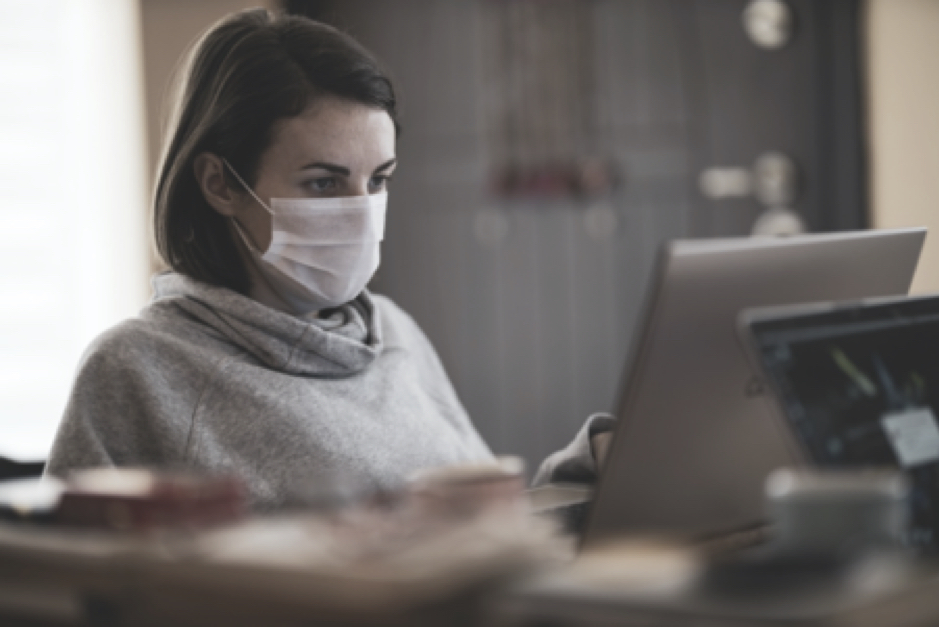In Wuhan, China, on the 31st of December 2019, events were beginning to unfold that were to change the world of work forever. As Covid-19 began to affect one country after another, it soon became clear that to get some sort of control of the virus, radical changes in the way we went about our daily lives, and work in particular, had to change.
To stop the unchecked spread of covid, workplace practices had to alter, and in some industries alter radically. Now, 18-months on, with no real end to the virus in sight, many employees have got used to the new way of working and want to keep it. It’s also fair to say a lot of companies feel the same. So, as we head toward a new year, and a hopefully reducing pandemic, how many of these new working practices are likely to stand the test of time?
Employers will become more sympathetic to sick-leave
A survey commissioned by Robert Half in 2019 found a staggering 90% of employees admitted attending work at some point with cold and flu symptoms. Reasons varied from not wanting to use up paid time off, to meeting deadlines, having too much to do, or demonstrating dedication.
With the very real danger of serious illness from covid still with us, and the speed with which the virus can spread to other work colleagues, our employers and insurance companies are more likely to sanction sick time for those showing any flu-type symptoms. Ensuring also that employees don’t lose out financially by taking time off. Better to be safe than sorry.
As a bonus, this more sympathetic view to sick-time off may also help reduce the annual global death toll of 500,000 influenza sufferers, by reducing the spread of flu as well as covid.
Remote working
Long before the advent of covid, many workers were already working from home. In the US, according to research carried out by Statista, pre-covid (2019), 10% of the workforce worked one or two days a week from home, which dropped, strangely enough, to just 6% post-covid (2020). However, those working from home full-time pre-covid totalled 17%, which climbed to 44% post-covid.
It must be said that the jury is still out when it comes to businesses changing completely to a WFH basis. For many staff, working in the office is the preferred option, and the only chance they get to enjoy a little in-person social life during lunch and coffee breaks. These workers are likely to be more productive when office working.
For others, the opposite is true, especially if they have other family commitments which sometimes clash with working hours or are in the high-risk category. They are likely to be more productive working from home, to ensure they can retain their WFH status.
The likely outcome is that businesses will offer staff the option of working from home or office. Or dividing their time between office and home. Even though things are improving, to maintain the momentum social distancing will likely still be a requirement in the workplace, as will the wearing of masks when moving around the office.
Flexi-hours will become more prevalent
Although businesses can increase the distance between work-stations, improve office ventilation and air-conditioning to minimize the risk of staff contracting the virus in the office, many workers still have to commute to work on packed trains and buses, with the high risk of infection that goes with it.
More companies are likely to offer the option of flexi-hours, so workers can commute in and out during off-peak periods, to minimize the chances of contracting the virus while travelling and spreading it into the working environment.
Better Wi-Fi and faster roll-out
The sudden increase of hundreds of thousands finding themselves having to work from home, or not work at all, threw up a few warning flags about Wi-Fi signals and reliability in more remote areas. A high percentage of those interviewed about their work from home internet experience were not particularly impressed. Many maintained signal strength was poor, leading to fears about meeting job deadlines. Others had to resort to using their smartphone as a Wi-Fi hot spot.
Wi-Fi installers will have to increase coverage and more powerful booster ariels will have to go up, to reach the more remote areas. With the increasing number of WFH jobs becoming available, small-town residents will no longer have to commute to the big cities for work.
Instead, they will be upgrading home internet systems looking for the best signals and fast download speeds. Video equipment will also become an increasingly important part of the WFH person’s home office, to allow for video conferencing, or those virtual face to face meets with colleagues or clients. The use of video can also help when it comes to staff motivation, one of the big concerns when businesses consider the WFH option.
For every upside there is a downside
With the expected big increase in home working, the high street shopping and leisure sectors will likely take a hit. Pre-covid, every day of the week, office workers provided a high percentage of footfall through the doors during lunch breaks and after work. Essential food shopping would be done, or friends and colleagues met for a drink, coffee or meal.
With empty offices and the substantial reduction in daily foot traffic, for many establishments, it will be the final straw in an already hard-pressed sector of the economy. While some businesses can convert to online retailing, many in the service sector, coffee shops, cafes and restaurants will have to call it a day and lock the doors.
Smaller changes may be made in sectors operating in an outside environment, where social distancing is easier to maintain such as farming, construction, field services and transport. Only time will tell, just how radical, the new normal is going to be.
Latest posts by Ray Brosnan (see all)
- Ways the Workplace Will Forever Be Changed by the Pandemic - November 15, 2021












